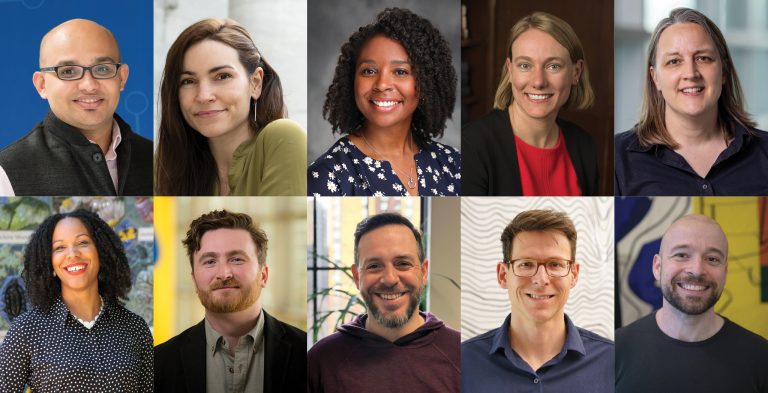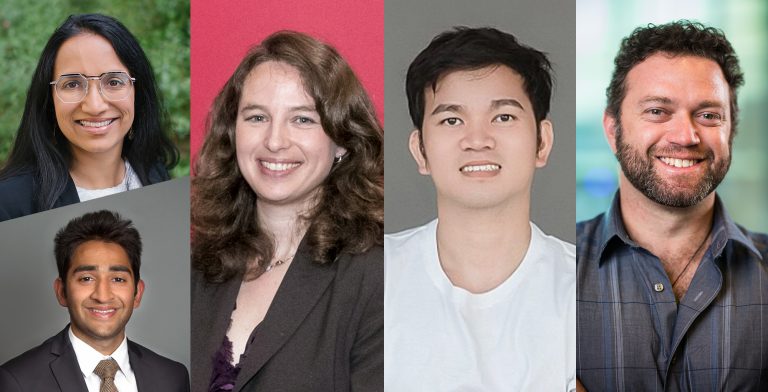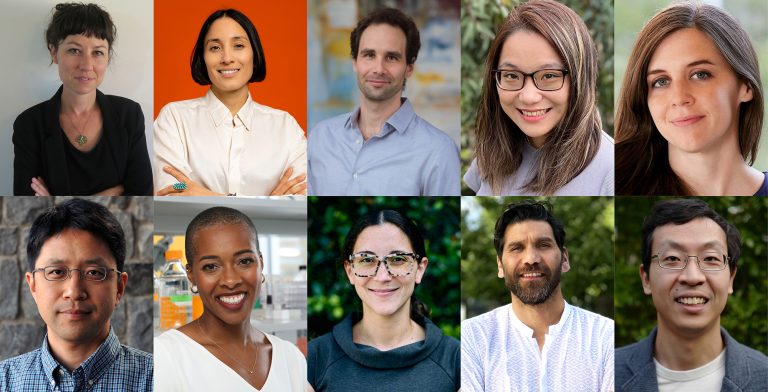July 22, 2019
The McKnight Endowment Fund for Neuroscience (MEFN) announced the three recipients of $600,000 in grant funding through the 2019 MEFN Technology Awards, recognizing these projects for their ability to fundamentally change the way neuroscience research is conducted. Each of the projects will receive a total of $200,000 over the next two years, advancing the development of these groundbreaking technologies used to map, monitor and model brain function. The 2019 awardees are:
- Gilad Evrony, M.D., Ph.D. of New York University Langone Health, who is developing fundamental new single-cell technologies to map naturally-occurring genetic mutations across large numbers of individual human brain cells in order to trace their lineages and create a kind of “family tree” of the brain’s different cell types.
- Iaroslav ‘Alex’ Savtchouk, Ph.D., of Marquette University, whose project involves a way to image brain activity in three dimensions in much higher resolution and much faster than has been possible before, allowing a more complete image of what is happening in living brains responding to stimuli.
- Nanthia Suthana, Ph.D., of the University of California, Los Angeles, whose team is developing a protocol to communicate with certain devices implanted in human brains as part of medical treatment and to capture deep brain activity data from humans immersed in virtual reality and augmented reality environments.
(Learn more about each of these research projects below.)
About the Technology Awards
Since the Technology award was established in 1999, the MEFN has contributed more than $13.5 million to innovative technologies for neuroscience through this award mechanism. The MEFN is especially interested in work that takes new and novel approaches to advancing the ability to manipulate and analyze brain function. Technologies developed with McKnight support must ultimately be made available to other scientists.
“Again, it has been a thrill to see the ingenuity at work in developing new neurotechnologies,” said Markus Meister, Ph.D., chair of the awards committee and the Anne P. and Benjamin F. Biaggini professor of biological sciences at Caltech. “This year, we were particularly pleased to sponsor several developments aimed at the human brain, from a method that traces the lineage of individual nerve cells to a device for reading and writing neural signals in freely walking patients.”
This year’s selection committee also included Adrienne Fairhall, Timothy Holy, Loren Looger, Mala Murthy, Alice Ting, and Hongkui Zeng, who chose this year’s McKnight Technological Innovations in Neuroscience Awards from a highly competitive pool of 90 applicants.
Letters of intent for the 2020 Technological Innovations award are due Monday, December 2, 2019. An announcement about the 2020 process will go out in September. For more information about the awards, please visit www.mcknight.org/programs/the-mcknight-endowment-fund-for-neuroscience/technology-awards
2019 McKnight Technological Innovations in Neuroscience Awards
Gilad Evrony, M.D., Ph.D., Assistant Professor, Center for Human Genetics and Genomics, Depts. of Pediatrics and Neuroscience & Physiology, New York University Langone Health
“TAPESTRY: A Single-cell Multi-omics Technology for High-Resolution Lineage Tracing of the Human Brain”
It is common knowledge that every human being starts as a single cell with a single set of DNA “instructions”, but details of how that one cell becomes trillions – including the tens of billions of cells in the brain – are still largely unknown. Dr. Evrony’s research is aimed at developing a technology called TAPESTRY, which may illuminate this process by building a “family tree” of brain cells, showing which progenitor cells give rise to the hundreds of types of mature cells in the human brain.
The technology may solve some of the key issues facing researchers studying human brain development. The key method for studying development by tracing lineages (introducing markers into cells of immature animals and then studying how those markers are transmitted to their progeny) is impossible in humans because it is invasive. Dr. Evrony’s prior work along with colleagues has shown that naturally-occurring mutations can be used to trace lineages in the human brain. TAPESTRY aims to advance and scale this approach by solving several limitations of current methods. First, lineage tracing requires more reliable isolation and amplification of the tiny amounts of DNA of single cells. Second, a detailed understanding of human brain development needs to be cost-effective to allow profiling of thousands or tens of thousands of individual cells. Finally, it needs to also map phenotypes of cells – not just seeing how closely cells are related, but also what types of cells they are. TAPESTRY seeks to solve these challenges.
Dr. Evrony’s approach is applicable to all human cells, but is of special interest in brain disorders. Once healthy brain lineages are mapped, they can be used as a baseline to see how brain development differs in individuals with various disorders that likely arise in development, such as autism and schizophrenia.
Iaroslav ‘Alex’ Savtchouk, Ph.D., Assistant Professor, Department of Biomedical Sciences, Marquette University
“Fast Panoptical Imaging of Brain Volumes via Time-tagged Quadrangular Stereoscopy”
Modern optical brain imaging techniques allow observation of a thin layer of the brain, but imaging lots of brain activity in 3-dimensional space – such as a volume of brain – has proven daunting. Dr. Savtchouk has developed an approach that allows researchers to see what is happening not just on the surface of a brain, but deep within and in much higher spatio-temporal resolution than ever before.
The core process – two-photon microscopy – picks up brain activity by looking for fluorescence in the genetically modified brain cells of laboratory animals. With a single laser, depth information is recorded very slowly. With two laser beams, researchers essentially get binocular vision – they can see what is closer and further away, but there still are visual “shadows” where nothing can be seen (for example, when a person looks at a chess board edge, some pieces may be blocked by nearer pieces.) Dr. Savtchouk is solving this issue with the addition of two additional laser beams, which gives quad-vision and greatly reduces blind spots. He is also sequencing the timing of the lasers – which pulse rapidly – so researchers know which laser saw which activity, critical to building a time-accurate three-dimensional model.
Dr. Savtchouk’s project first involves designing the system in computer simulations, then proving its application with mouse models. His goal is to develop ways to update existing two-photon microscopes both through the addition of laser beams and through upgrades to hardware and software, allowing labs to benefit from the technology without paying for a whole new system.
Nanthia Suthana, Ph.D., Associate Professor, Department of Psychiatry and Biobehavioral Sciences, University of California, Los Angeles
“Wireless and Programmable Recording and Stimulation of Deep Brain Activity in Freely Moving Humans Immersed in Virtual (or Augmented) Reality”
Studying human neurological phenomena presents many challenges – human brains cannot be studied directly like animal brains, and it is hard to recreate (and record the outcomes of) the phenomena in a laboratory setting. Dr. Suthana proposes developing a system that uses virtual and augmented reality to create realistic test scenarios for her subjects. She uses data recorded by implantable brain devices used in the treatment of epilepsy.
Hundreds of thousands of people have these devices implanted, and many of the implanted devices allow for wireless programming and data recovery. Dr. Suthana’s approach takes advantage of the latter – these devices record all kinds of deep brain activity, and she can tap into data recorded while subjects are interacting in VR or AR-based experiments. Importantly, the subjects can move freely since they carry the brain activity monitor and recording device with them. Motion capture and biometric measurements can be made simultaneously, assembling a complete picture of responses.
Dr. Suthana is working with a multidisciplinary team to make the system work; the team includes electrical engineers, physicists, and computer scientists. Basic facts like signal latency need to be established so data can be synchronized and measured accurately. Ultimately, she believes that freely-behaving humans interacting with the most realistic simulations possible will allow researchers to understand more accurately how the brain works. In addition to basic neurological questions – like what brain activity and physical responses accompany specific actions or reactions to stimuli – the system shows promise for research into post-traumatic stress disorder and other conditions where environmental triggers can be simulated in a controlled virtual environment.


